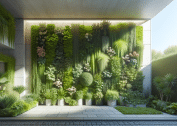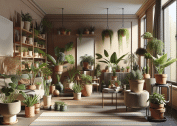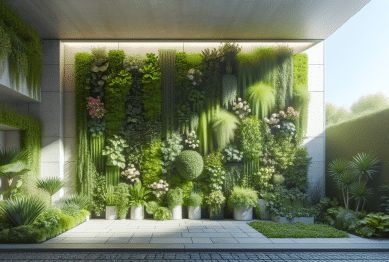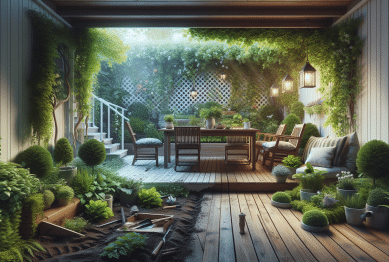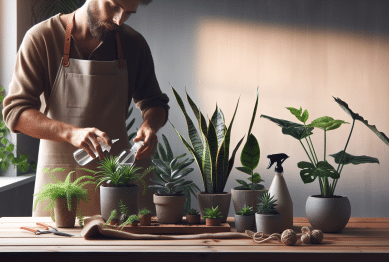Explore how minimalist decor can redefine the feel of any living space, blending style and functionality. This guide reveals practical tips, trending design elements, and creative inspirations for those interested in a clutter-free, visually stunning home environment.
Discovering the Appeal of Minimalist Decor
Minimalist decor has captivated design enthusiasts around the world, thanks to its elegant simplicity and timeless appeal. This style is about focusing on essential elements—eliminating anything that doesn’t serve a clear function or aesthetic purpose. In minimalist interiors, clean lines, neutral color palettes, and strategic use of light are prominent, helping rooms feel more open and calming. Not only does this trend cater to those searching for minimalist inspiration, but it also aligns with contemporary preferences for uncluttered, breathable spaces that invite relaxation and creativity. Those drawn to minimalist decor often appreciate how it showcases functionality without sacrificing beauty.
Many find that embracing minimalist design can shift their mindset from accumulation to intentionality. Carefully selected home accents, such as geometric planters or textured rugs, double as both decorative and purposeful, supporting the philosophy that less is truly more. By paring back, rooms can appear larger and more cohesive—a key benefit for small urban apartments or open-plan homes. The minimalist lifestyle also resonates with those eager to maintain tranquility at home, since clutter is closely linked with stress and distraction. The principle of ‘form follows function’ rings true here, making every decor choice deliberate.
Besides aesthetics, minimalist decor fosters mental clarity. Living in a streamlined environment encourages focus, especially in multi-use spaces like home offices or studios. Some discover that minimalist room ideas prompt them to invest in higher quality furnishings that last, rather than trends that fade quickly. This focus extends to material selection, with sustainable woods, glass, and metals favored for their durability and elegance. With the rise of digital wellness and remote work, many are turning to minimalist design to create harmonious sanctuaries that offer both a sense of calm and a space for productivity.
The Building Blocks of a Stylish Minimalist Home
When starting your minimalist home transformation, color is fundamental. Soft whites, pale grays, and subtle beiges provide a neutral backdrop that enhances natural light and pairs effortlessly with statement accents. Selecting a monochromatic color scheme can unify different areas, creating seamless transitions between living, dining, and sleeping zones. These understated tones are trending on design platforms and among interior architects alike, as they open up spaces and subtly highlight architectural details. Minimalist wall decor—like simple framed art or a curated photo display—adds warmth without overwhelming the senses.
Furniture selection shapes the entire vibe of a minimalist living space. Think clean, geometric lines and streamlined silhouettes—sofas with tapered legs, simple wooden coffee tables, or floating shelves that help maximize floor area. Functionality remains key; modular pieces that can adapt or fold away are especially popular in small homes or apartments. Designers often suggest investing in versatile pieces, like a bench that doubles as storage or a dining table with concealed extensions, to allow flexibility while adhering to minimalist values. The result is a living area that’s both organized and aesthetically pleasing.
Though minimalist design leans toward simplicity, texture is quietly powerful. Layering tactile elements—such as chunky knit throws, raw wood surfaces, or linen cushions—adds depth and interest without visual noise. Greenery, too, plays a role; a few carefully chosen houseplants offer a refreshing pop of color and promote better indoor air quality. Accessories should be thoughtfully curated rather than abundant. Decorative bowls, sleek metal lamps, or artisan ceramics provide artistic flair and personal expression while upholding the uncluttered ethos that minimalist decor is cherished for.
Decluttering for Lasting Simplicity
Effective decluttering is the cornerstone of any minimalist makeover. The process typically begins with a clear-out: removing items that are no longer needed, wanted, or used on a regular basis. Experts recommend sorting possessions by category for a more efficient purge—clothes, books, kitchenware, and so on. Once sorted, thoughtful storage solutions like under-bed drawers, built-in cabinetry, or multi-functional furniture help keep everyday essentials hidden yet accessible. Decluttering for minimalist living isn’t just a one-off event; it’s a mindset that encourages conscious consumption and ongoing organization.
Streamlining possessions can lead to better emotional wellness. Excess clutter is often linked to increased stress and reduced productivity, as highlighted by behavioral psychology studies (https://www.psychologytoday.com/us/blog/making-change/201408/the-unexpected-benefits-minimalism). Decluttering allows a room’s key features—like architectural lines, artwork, or natural light—to shine unobstructed. Many find that the simple act of clearing a surface or organizing a closet can yield an immediate sense of calm and satisfaction. Establishing regular decluttering routines, such as a monthly closet check or daily tidy-up, makes it easier to maintain the minimalist lifestyle over time.
Storage doesn’t have to compromise style. Open shelving with baskets, hidden storage ottomans, or minimalist wardrobes are all solutions that blend seamlessly into modern interiors. Labels and designated zones for items (like charging stations or key holders) reduce the chance of clutter re-emerging. Incorporating technology, such as smart home storage systems, can further support clutter-free living. The key is to choose systems that feel intuitive, ensuring upkeep doesn’t become a burden. This ongoing balance fosters a peaceful space—one that supports both relaxation and inspiration.
Maximizing Small Spaces with Minimalist Room Ideas
Minimalist design is especially powerful in small apartments or urban flats, where every inch counts. Light-colored walls, large mirrors, and strategic lighting help small rooms feel airy and spacious. Opting for multi-functional furniture—like nesting tables or wall-mounted fold-down desks—expands possibilities without consuming space. Visual harmony is essential, so keep high-traffic areas clear and favor slender, legged pieces over bulky blocks. Even tiny balconies can become tranquil retreats with a minimalist approach, using compact seating and a pared-back palette.
Clever use of vertical space keeps floors uncluttered. Tall shelving, wall hooks for bikes or coats, and floating nightstands free up room for movement and help maintain the clean look that defines minimalist living. In kitchens, magnetic strips replace countertop knife blocks; in bathrooms, over-the-door racks offer discreet towel storage. Minimalist decor also champions natural light—avoid blocking windows and opt for sheer curtains or unadorned panes to let daylight saturate the space. Adding a few unique decor accents, such as a sculptural lamp or a bold cushion, ensures the room feels personal, not sterile.
Personal touches matter, even when space is tight. Minimalism isn’t about deprivation, but about meaningful selection. Hanging a single favorite artwork over the bed, displaying a few beloved books, or using one striking plant as a focal point gives the room character. The key is curation: let each item add value or joy. When storage is scarce, rotate seasonal decor, or limit collectibles to one shelf. This approach not only maximizes function, it also creates a space that feels purposeful, inviting, and uniquely yours.
Curating Minimalist Decor Accents and Trends
Accents are where personal style shines in minimalist homes. Glass vases with single-stem botanicals, monochrome prints, or artisan trays can add distinct flair without overpowering the visual calm. Trends in minimalist decor watchwords include sustainability—upcycled woods or eco-friendly textiles are especially appealing for their low environmental impact. Muted metallic finishes, like soft gold or matte black fixtures, provide warmth and subtle glamour. These small touches create coherence throughout the home, pulling each element together while allowing individuality to show through.
Popular minimalist decor trends are shifting toward wellness and sensory experiences. Scented candles, salt lamps, and textured ceramics offer not only visual beauty but also engage other senses, fostering feelings of well-being. For those inspired by hygge, a Nordic take on minimalism, layering soft textiles and soft lighting creates cozy corners even with little furniture. Natural materials—wool, rattan, linen—are being incorporated more, emphasizing harmony with nature. Social media platforms and design journals feature these evolving minimalist ideas, underlining their adaptability and broad appeal.
Minimalist home office setups are in demand as remote work evolves. Standing desks, cable organizers, and modular shelving provide tailored solutions for productivity. Accent walls or a single statement chair can define a workspace without visual clutter. Even children’s rooms are seeing minimalist updates; rather than excess toys, parents opt for quality over quantity with open-ended play objects stored in sleek bins. As minimalism adapts to lifestyle changes, it remains a powerful means to blend functionality and beauty in everyday living.
Practical Steps to Adopt a Minimalist Lifestyle
Adopting a minimalist lifestyle extends beyond decor; it’s a mindset shift. Begin by reflecting on which possessions truly add value. Mindful purchasing supports long-term savings and environmental responsibility, by avoiding impulse buys that later turn into clutter. Set manageable goals: tackle one area at a time and celebrate visible progress. Many find inspiration in minimalist living communities or by following sustainability guides, which offer practical ideas tailored to family, work, or solo households.
Routine evaluation, where items are reviewed and released periodically, helps maintain a minimalist home. Donation and recycling not only keep the space fresh, they benefit local charities and minimize environmental waste. Digital minimalism—organizing files, unsubscribing from emails, streamlining apps—can be just as liberating as decluttering physical items. This approach reduces overwhelm in both physical and digital environments, emphasizing the goal of minimalist living: room to breathe, think, and enjoy.
Minimalism is ultimately about intentional living. It means prioritizing experiences over possessions, and quality over quantity. By embracing this mindset, many discover more time for hobbies, relationships, and personal growth. Spaces feel lighter and more peaceful. Whether beginning with a single room or a whole home revamp, minimalist decor is a flexible and rewarding path to a more fulfilling lifestyle.
References
1. Grøntoft, L. (n.d.). Minimalism: Benefits and Lifestyle. Retrieved from https://www.ncbi.nlm.nih.gov/pmc/articles/PMC7604784/
2. Leung, L., & Fung, T. (2021). Decluttering and Emotional Wellbeing. Retrieved from https://journals.sagepub.com/doi/full/10.1177/00139165211039561
3. Psychology Today. (n.d.). The Unexpected Benefits of Minimalism. Retrieved from https://www.psychologytoday.com/us/blog/making-change/201408/the-unexpected-benefits-minimalism
4. Mayo Clinic. (n.d.). Stress Management: Declutter Your Life. Retrieved from https://www.mayoclinic.org/healthy-lifestyle/stress-management/in-depth/declutter/art-20270120
5. American Society of Interior Designers. (n.d.). Minimalist Design Principles. Retrieved from https://www.asid.org/resources/articles/minimalist-design-principles
6. The Spruce. (n.d.). Creating a Minimalist Home. Retrieved from https://www.thespruce.com/how-to-create-a-minimalist-home-4144963


